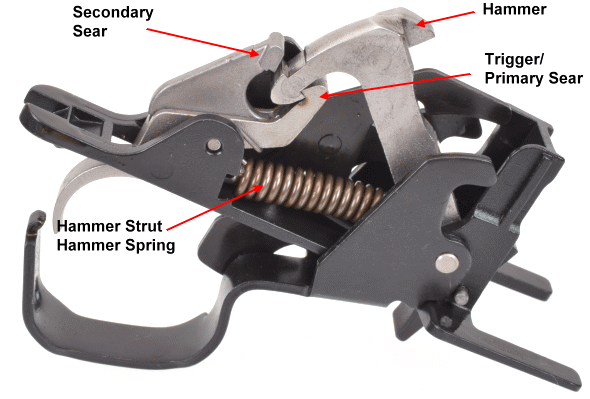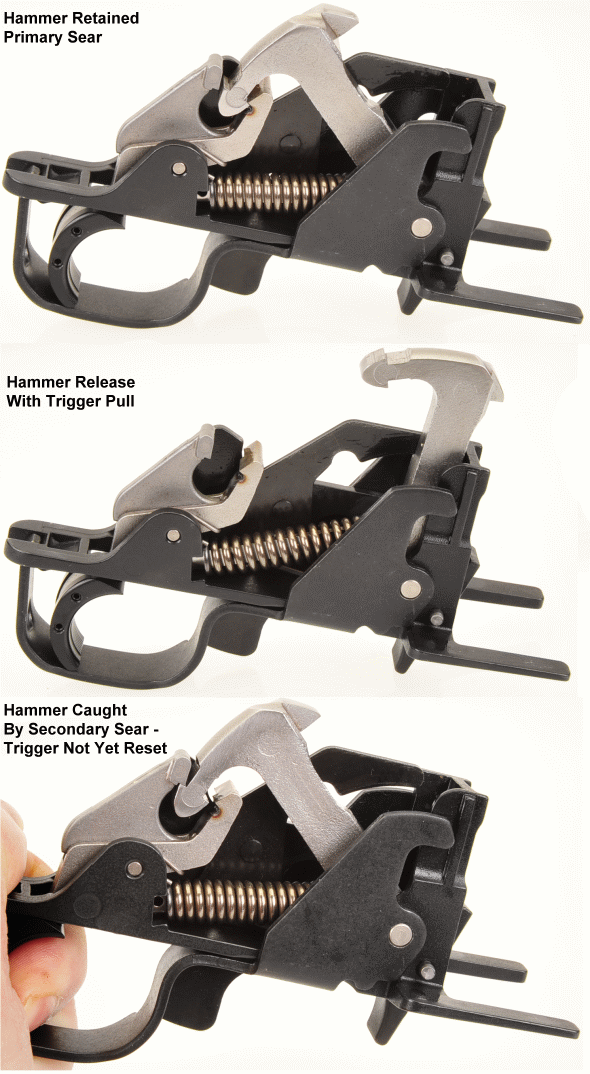The prior installment was titled Ruger’s Mighty Mini Thirty… ish 1 1/2 because the prior step was only half of a solution and now we are back to finish the job. During baseline testing, the Ruger Mini Thirty fired spec, premium or cheap, with perfect reliability. For the heck of it, we loaded up with non-spec, cheapo Russian Berdan primed ammo and had a 13% failure to fire rate. Not a problem with the Ruger, a problem with the guy who insisted on shooting ammo not intended for this firearm… me.
As detailed in Part 1 1/2, we installed a $7.49 Wolff +20% extra power hammer spring SKU #30351, which immediately expanded the Mini Thirty’s capabilities to include 100% reliability with Russian Berdan primed ammunition. Not a Ruger statement or recommendation, a Joe assessment. Unfortunately, the increase in hammer spring rate and stock trigger pieces bumped the already heavy and rough 6 Lb 9 Oz trigger pull to a Mongo heavy 7 Lb 11 Oz.. The alternatives were to buy mini barbells to work out my trigger finger or to get a trigger job for the Ruger.
Simple design, complicated issues…

Below in the first picture – In a ready to fire state, the Ruger Mini hammer is retained by the primary sear hook and clear of and above the secondary sear hook. As the trigger is pulled, the hammer holds the secondary sear back as the primary sear is pulled free of the hammer hook.
In the second picture – The hammer, released by the sear and powered forward by the hammer spring, drives forward and strikes the firing pin. The bolt is driven back, carrying the hammer rearward.

Picture Three – With the trigger still pulled reward, the secondary sear catches the hammer and prevents it from following the bolt as it returns forward. When the trigger is allowed to return forward, the hammer will jump to the primary sear where it will be retained and the relationship amongst hammer, primary and secondary sear will again appear as it is in first picture.
The two stage feel is the result of a sequence of two different sets of resistances. The first is take-up and the initial movement of the hammer over the primary sear, the second is the balance of the hammer movement over the primary sear and the trigger pushing the hammer against the secondary sear and over coming the resistance of the safety detent spring.
So grab that bench grinder and have at it… Yee Ha!
While the trigger group seems simple enough, there are lots of critical angles, engagement surfaces and parts orientation that are actually present on most triggers. However, ignoring the significance of these attributes on the Mini may have more obvious consequences. If the secondary sear does not catch the hammer, it will fall forward and follow the bolt, not with enough energy to fire the rifle, however, it will leave the rifle in an unreliable and/or inoperable condition.
If the gap between primary and secondary sears is modified and made too wide, the rifle could double or static fire which is also an unsafe condition and will not make friends at the range or while hunting. Sear/hammer engagement that is too little or cut at a negative angle makes for the same. Polishing or stoning pieces without control of parts’ orientation, parallelism or angles is a prescription for a problem. A “trigger job” is not grabbing a Dremel and polishing parts to a chrome like finish… except on YouTube where a trigger job often means making things shiny and to a non-specific shape.
In order to save time and the expense of tooling, and to get a close look at the specifics of work from a quality shop, we had the our Mini Thirty trigger worked over by Accuracy Systems Inc. The work was relatively inexpensive with the trigger job priced at $69.99. Another $35 adds a wide trigger shoe that reduces felt trigger effort and acts as a trigger stop and a small eccentric that limits take-up.

The first thing I did was check how the rifle performed with Russian revenge 7.62 x 39mm ammo, where it fired without skipping a beat. The second thing I noticed was that accuracy when shooting through metallic sights improved. Shooting with a scope makes for critical shooting at the image makes the shooter aware of the least little bit of movement. Open sights? Not so much.
The final result of this installment is a clean, crisp, light trigger pull; 3 Lbs. 2 Oz. down from 7 Lbs 11 Oz. with a hammer that swings with enough force to reliably fire commercial grade steel cased ammo with Berdan primers. Next on the list… Adjustable gas block.
Ruger’s Mighty Mini Thirty… ish Part I
Ruger’s Mighty Mini Thirty… ish Part 1½
Ruger’s Mighty Mini Thirty… ish Part 2
Ruger’s Mighty Mini Thirty… ish Part 3
Ruger’s Mighty Mini Thirty… ish Part 4

Email Notification